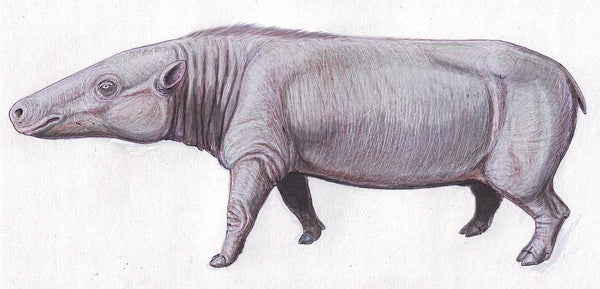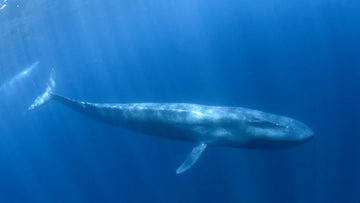Blue whales, the largest creatures ever to roam the earth, have been a source of wonder and fascination for people around the world for centuries. These magnificent creatures possess unique characteristics and behaviors that make them truly extraordinary.
In this article, we will explore 14 fascinating blue whale facts about their appearance, anatomy, feeding habits, communication, breeding, and more. From the amazing coloration of their bodies to their incredible size and the challenges they face in today's world, we will explore the fascinating world of blue whales and discover the secrets that make them one of nature's most extraordinary creations.
1. Blue whales... are not blue
Although blue whales appear blue underwater, they are actually blue-gray in color. Their bellies are also yellow due to the millions of microorganisms and diatoms that attach to and live on their bodies as they swim in nutrient-rich waters.
2. The largest creatures that ever walked the earth
Blue whales hold the title of being the largest creatures that have ever walked the earth. They surpass even dinosaurs and the prehistoric shark Megalodon, which is estimated to have reached 16 meters in length, 8 meters shorter than some blue whales.
These majestic creatures can be as large as a Boeing 737 and weigh up to 150 tons, with females being larger than males.
T-shirts for Whale Lovers
SEE MORE WHALE T-SHIRTS
3. Unparalleled proportions

4. Could swallow up to 100 people at a time
The mouth of a blue whale is extraordinary. It can hold up to 100 people. Its mouth is very flexible thanks to the 80 to 100 long grooves that run along its throat and chest. When swallowing water, the blue whale filters krill, its main prey, through the baleen, a specialized adaptation of its mouth.
5. They only eat once in a while
Blue whales feed voraciously on krill during the summer months in cold, Arctic waters. However, when they migrate to warmer oceans during the breeding season, they can go up to six months without feeding. When they do feed, however, they can eat up to 4 tons of krill per day.
6. Excellent hearing
Blue whales have no external ears, but they have excellent hearing. They use air sinuses and bones to detect sounds and communicate with other whales.
7. Songs in the loudest voice
Have you ever heard blue whales communicate?
Show Your Love for Whales
SEE MORE WHALE SWEATSHIRTS8. Giant babies
Blue whale calves are born big, really big. At birth they can weigh almost 3 tons and are already 8 meters long. From then on, in the first few days, they gain 90 kilograms a day and feed on 500 liters of mother's milk a day. Blue whales have one of the fastest growth rates in the animal kingdom.
9. Lonely travelers
Blue whales are solitary creatures for most of their lives, unlike other whales such as sperm whales. Blue whales often travel alone throughout their lives, occasionally forming pairs or small groups. Large groups are most often seen when they gather to feed on krill.
10. Relatives of hippos
 Anthracotherium magnum
Anthracotherium magnum
11. Hunted to near extinction
Blue whales have been severely affected by human hunting, with approximately 360,000 whales killed in just 60 years. However, since the creation of the International Whaling Commission in 1966, efforts have been made to protect these magnificent creatures. Despite some recovery, the current population of blue whales is only 0.15% of its original size.
12. They live more than 80 years
Because blue whales have no teeth, scientists have discovered an unconventional way to estimate their age: by analyzing their earwax. Like the rings of a tree, the layers of wax that accumulate in a blue whale's ear canal can reveal its age. On average, these giant creatures have a life expectancy of 80 to 90 years.
13. They do not sleep completely
Blue whales, like dolphins, have an interesting sleep pattern. They cannot sleep at all like land mammals because they need to surface periodically to breathe. However, they have evolved an involuntary respiratory system that allows one half of their brain to sleep while the other half remains active.
14. They have almost no predators
Because of their size and speed, blue whales have few natural predators. The only known attacks are by killer whales on calves, which can be identified by the scars of their teeth on their bodies. Killer whales work together, surrounding blue whales on all sides to prevent them from escaping. However, successful attacks on blue whales are extremely rare, and humans remain their greatest threat.

























